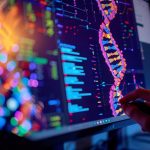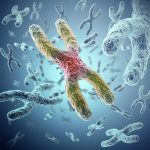My 10-year-old grandson is a blur of energy. One day it’s soccer, the next it’s wrestling or swim team. He’s on the move from sunup to sundown — and somehow, never seems to tire.
That’s the beauty of being a kid. Their energy is practically limitless, powered by fresh cells, long telomeres, efficient mitochondria, and a flood of what scientists call “youth genes,” also known as sirtuins.
We adults? Not quite so lucky.
As we age, three major things happen inside our bodies that slow us down:
- The expression of sirtuins (SIRT) – often called our “youth” or “longevity” genes – decline.
- Telomeres, the protective segments of DNA at the end of your chromosomes that act as an aging time clock, tend to grow shorter.
- Your body’s energy factories (mitochondria), begin to wear out, mutate and start to malfunction.
When even one of these systems goes awry, the effects are noticeable: fatigue, brain fog, aches and pains, and the feeling that you’re just not as sharp — or energetic — as you used to be. And since these three systems are tightly interconnected, a problem with one often triggers a domino effect in the others.
Each of them is related to health issues like heart disease, metabolic disorders, decreased strength, stroke, memory problems and early death.
But here’s the exciting part: we now know how to target the root of this aging cascade — and take real steps to reverse it.
While it won’t make you feel like a kid again, it can help you to look and feel much younger and whole lot healthier than other folks your age.
🧪 Meet NAD
It all starts with a molecule called NAD — short for nicotinamide adenine dinucleotide.
NAD is a coenzyme found in every cell of your body. It plays a central role in metabolism, DNA repair, and keeping your mitochondria running smoothly. But most importantly, it activates your sirtuins — including SIRT1, the master regulator of mitochondrial replication. When activated, it helps your body produce more of those energy factories and keep your cells powered up to youthful levels.
The catch? NAD levels naturally plummet as we age. And when NAD drops, sirtuin activity falls with it. That leads to fewer healthy mitochondria, faster telomere shortening, and — you guessed it — accelerated aging.
It’s a vicious cycle. But one you can break.
🔋 How to Boost NAD Naturally
Now you might think, “I’ll just take an NAD supplement.” Unfortunately, NAD itself is poorly absorbed by your cells.
The better approach? Use a precursor — the main building-block your body can convert into NAD more easily.
That’s where nicotinamide riboside (NR) comes in. It’s a special form of vitamin B3 that’s highly bioavailable and has been shown to significantly raise NAD levels.
Here’s what I typically recommend to my patients:
- Start with 50–100 mg of nicotinamide riboside daily. Increase by 100 mg each week until you reach 500 mg daily.
Then…
- Supplement with at least 50 mg of resveratrol daily. This incredible antioxidant has the power to both rev up your mitochondria, and preserve the length of your telomeres.
- Add 50 mg of CoQ10 daily for even more mitochondrial support. (Increase to 100 mg if you’re taking a statin drug.) Look for the ubiquinol form of CoQ10, as it is the more absorbable form.
These nutrients work in harmony to energize your cells, protect your DNA, and help your body feel decades younger — inside and out.
🎯 Reclaim Your Vitality — Starting Today
Staying active and involved in the lives of my children and grandchildren is one of the great joys of my life. That’s why I make this part of my daily routine — and encourage others to do the same.
You don’t have to accept fatigue and decline as a normal part of aging. With the right tools and knowledge, you can reclaim your vitality, stay energized, and live life to the fullest.
So here’s to feeling strong, sharp, and full of life — no matter your age.
SOURCES:
Massudi H, Grant R, Braidy N, Guest J, Farnsworth B, Guillemin GJ. Age-associated changes in oxidative stress and NAD+ metabolism in human tissue. PLoS One. 2012;7(7):e42357.
Cantó C, Auwerx J. Targeting sirtuin 1 to improve metabolism: all you need is NAD(+)? Pharmacol Rev. 2012 Jan;64(1):166-87.
Shin-ichiro I, Guarente L. It takes two to tango: NAD+ and sirtuins in aging/longevity control. NPJ Aging and Mechanisms of Disease. 2016 Aug; no.16017.
Palacios JA, Herranz D, De Bonis ML, Velasco S, Serrano M, Blasco MA. SIRT1 contributes to telomere maintenance and augments global homologous recombination. J Cell Biol. 2010 Dec 27;191(7):1299-313.
Passos JF, Saretzki G, von Zglinicki T. DNA damage in telomeres and mitochondria during cellular senescence: is there a connection? Nucleic Acids Res. 2007;35(22):7505-13.
Ito TK, Sato T, Takanashi Y, Tamannaa Z, et al. A single oral supplementation of nicotinamide within the daily tolerable upper level increases blood NAD+ levels in healthy subjects,
Translational Medicine of Aging. 2021;(5):43-51.
Tao W, Zhang H, Jiang X, Chen N. Resveratrol combats chronic diseases through enhancing mitochondrial quality. Food Science and Human Wellness. 2024;13(2):597-610.



